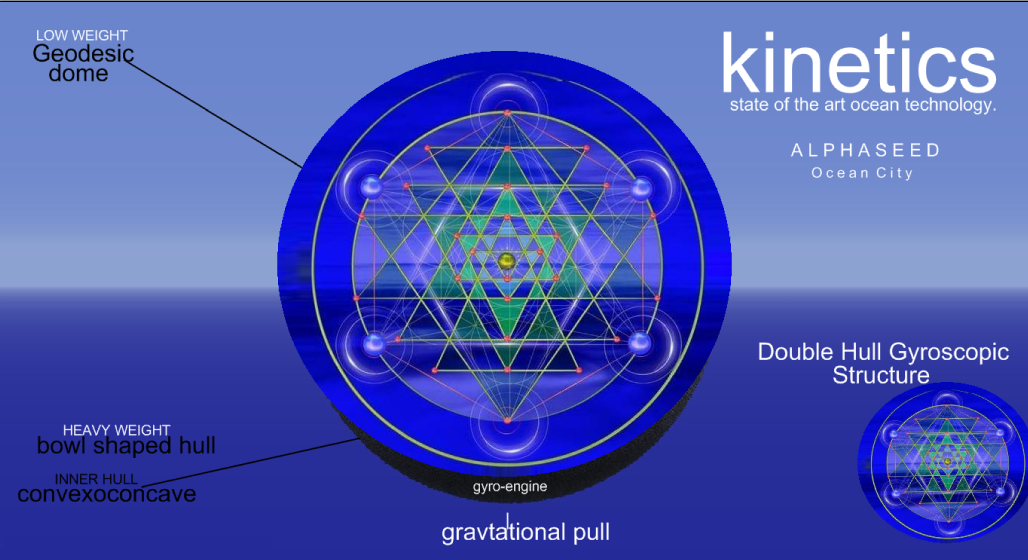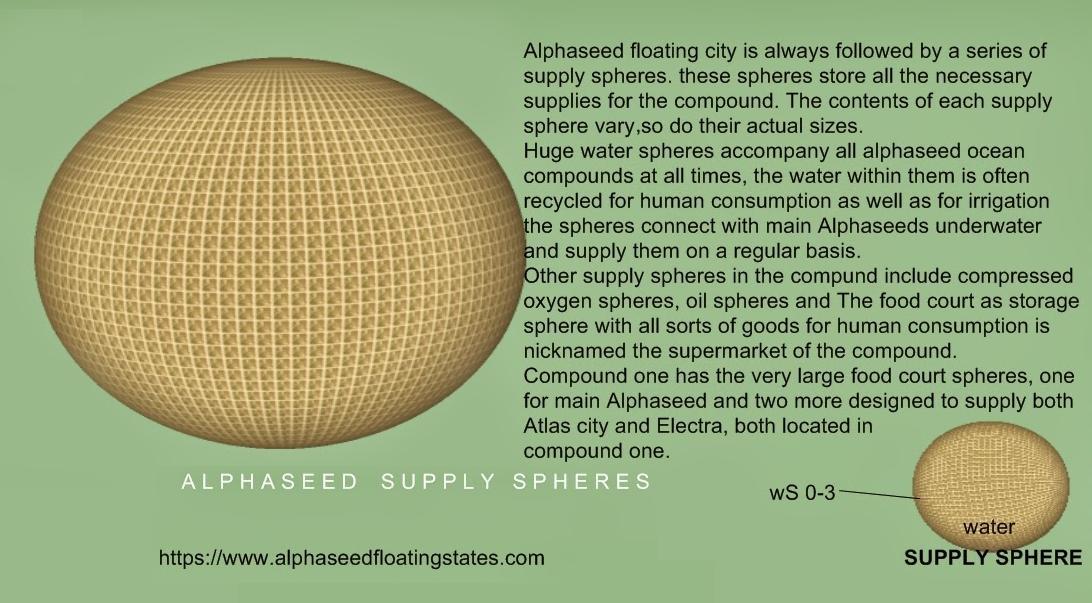 In the short amount time that we have been covering this industry, we have reported on many amazing 3D printing related projects being undertaken by various individuals and companies around the globe. There have been 3D printed cars, 3D printed apartment buildings, and even an entire 3D printed estate that is expected to be erected in New York sometime this year. However, when we were contacted by a man named Tops Nicol, the research founder of the Alphaseed project, we were truly blown away.
In the short amount time that we have been covering this industry, we have reported on many amazing 3D printing related projects being undertaken by various individuals and companies around the globe. There have been 3D printed cars, 3D printed apartment buildings, and even an entire 3D printed estate that is expected to be erected in New York sometime this year. However, when we were contacted by a man named Tops Nicol, the research founder of the Alphaseed project, we were truly blown away.
“Science is fascinating and its latest growth in all branches of scientific research has helped us foresee a brand new future for humanity,” Nicol explained to 3DPrint.com. “There are many myths about humans over-populating the planet, but in a project like the Alphaseed, we debunk such misconceived notions by pointing our fingers to the ocean, where giant floating cities could not only be ‘floating’ but actually have the capability of going entirely underwater as well. Our research aims in that direction.”
 The idea of building underwater and/or floating cities within the Earth’s oceans is one that surely has been thought about by many in the past. It would make for the perfect location for nuclear bomb shelters, as well as provide individuals and companies a safe haven from government rule. At the same time, the idea of over-population could be thrown out the window.
The idea of building underwater and/or floating cities within the Earth’s oceans is one that surely has been thought about by many in the past. It would make for the perfect location for nuclear bomb shelters, as well as provide individuals and companies a safe haven from government rule. At the same time, the idea of over-population could be thrown out the window.
Seasteading is currently under study by various government and private entities, to determine exactly what type of structures could be suitable for intra-ocean building. The Alphaseed project, however, believes that they have the answer, using 3D printing technology to create multiple massive structures which could within themselves become entire cities. The Alphaseed would be a geodesic dome, featuring a convexo-concave lower hull.
So how exactly could this Alphaseed, which could basically house an entire city’s worth of people, be 3D printed? While nothing has been set in stone yet, and the idea remains just an idea open for thought, initial concepts would involve large computerized scaffolding which 3D print heads and other robotic devices could use to fabricate the hulls of these structures as well as other more detailed aspects. The concept would use liquid crystal polymers, such as Vectran, in order to create a structure capable of withstanding large impacts. This material is currently being used by NASA for aiding in soft landings on Mars. Another material that Alphaseed will consider is graphene. It is an extremely strong material that could be used in the 3D printing of many strong, conductive materials in the future.
“The advancements in 3D printing allow us not only to envision such structures, but to actually print them through robotic nozzles placed on a robotic scaffold, perfectly capable of following the same orders a 3D printer receives,” Nicol explains. “These robotic devices with 3D printing capabilities would be able to locate each electrical outlet from within the sphere and print out the conductors in any given location through a local positioning system, thus printing the part where it must be mounted and printing large structures in detail. The ability to print tiny details through 3D printing injection mounted on an independent robotic unit with just the right amount of material, such as graphene, can be positioned appropriately.”
The Alphseed floating spheres will also double as a large gyroscopes, being able to stand up completely vertical, no matter how much movement is going on in the surrounding water. This means that large storms would not cause massive amounts of sway nor would these storms cause the orientation of the spheres to change.
The ultimate plan is to create many different aspects of entire floating ocean nations. Included, among others, would be giant ‘Alphacities,’ as well as Alphaseed floating sea parks, which would aim at protecting endangered sea species. These would feature a 658-meter circumference and cruise-liner-like facilities.
 Obviously this all remains just a concept — a concept that may or may not ever get off the ground. However, it certainly seems like something that could actually materialize someday in the future. For now, Alphaseed is looking for brilliant minds to help out on this project, as well as the attention of those capable of providing investment capital and media coverage. In doing so, they plan to take an interesting route.
Obviously this all remains just a concept — a concept that may or may not ever get off the ground. However, it certainly seems like something that could actually materialize someday in the future. For now, Alphaseed is looking for brilliant minds to help out on this project, as well as the attention of those capable of providing investment capital and media coverage. In doing so, they plan to take an interesting route.
“Alphaseed seeks to launch a science fiction book about its building, where the new advancements in technology can come out of the closet and into a mainstream and hopefully a viral story, which in turn may entice other investors for its making, by inviting the scientific community to build something out there in the ocean with enough technology and state of the art materials like graphene,” Nicol tells 3DPrint.com. “I believe we already have that technology. The crisscross within science and science fiction enables us to imagine how those things will perform for our future.”
Nicol is also throwing around the idea of starting Alphaseed as a “virtual nation,” one which takes place on the internet. The hope is that it would entice people to come up with unique ideas, create useable passports that could be utilized in a real Alphaseed nation, as well as a virtual currency somewhat like Bitcoin.
“We also seek to start a series of crowdfunding on the web for initial projects like our sci-fi book, and a sci-fi anime (avatar style) movie,” he explains.
Quite frankly, this project seems to have rather lofty expectations, and certainly we are still years, or perhaps decades from seeing this actually materialize, if it ever does. However, the concept is there, and the potential remains for 3D printing to continue to prove that the unthinkable may actually not just be for science fiction novels after all.
What are you thoughts on the Alphaseed project? Could 3D printing actually be used on computerized scaffolding systems in order to print massive structures? It seems like a good idea, but when it comes down to it, do you think it could work? Discuss in the Alphaseed forum thread on 3DPB.com.
Subscribe to Our Email Newsletter
Stay up-to-date on all the latest news from the 3D printing industry and receive information and offers from third party vendors.
You May Also Like
Profiling a Construction 3D Printing Pioneer: US Army Corps of Engineers’ Megan Kreiger
The world of construction 3D printing is still so new that the true experts can probably be counted on two hands. Among them is Megan Kreiger, Portfolio Manager of Additive...
US Army Corps of Engineers Taps Lincoln Electric & Eaton for Largest 3D Printed US Civil Works Part
The Soo Locks sit on the US-Canadian border, enabling maritime travel between Lake Superior and Lake Huron, from which ships can reach the rest of the Great Lakes. Crafts carrying...
Construction 3D Printing CEO Reflects on Being Female in Construction
Natalie Wadley, CEO of ChangeMaker3D, could hear the words of her daughter sitting next to her resounding in her head. “Mum, MUM, you’ve won!” Wadley had just won the prestigious...
1Print to Commercialize 3D Printed Coastal Resilience Solutions
1Print, a company that specializes in deploying additive construction (AC) for infrastructure projects, has entered an agreement with the University of Miami (UM) to accelerate commercialization of the SEAHIVE shoreline...































